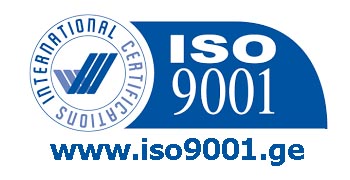Make sure to plan the work on 2 stages: Development and implementation of Quality Management System and Certification of the Quality Management System.
Technical Specifications. Development of technical specifications for products.
Dear colleagues!
Our expert organizations to develop Technical Specifications for products for the order. Spending updating old TU (mandatory procedure at least once every 5 years).
Attention!
In developing the TU strongly recommend making your brand. This will improve your competitiveness and to protect against counterfeiting. We work with competence, operational quality (period of 1-3 months).
TU - technical specifications - normative document that prescribes technical requirements to be met by a product, process or service, and specifies the procedures by which it can be established statutory requirements are met.
Since the introduction of EU Directives, any producer himself has the right to develop technical specifications. Now the manufacturer is solely responsible for the safety and quality of products. If you want to become a domestic manufacturer of any product, will sooner or later come across the issue of the document regulating - order production, the requirements to raw materials, methods of product quality control and other aspects of production.
That document can be harmonized with the EU national standard DSTU EN, DVGW - interstate standard operating since Soviet times, DSTU - national standard times of independent Ukraine or TU - technical conditions for production, ie, standard, which is owned by the company itself.
Technical Specifications (TS) developed an interested party (now the manufacturer enterprises associations), depending on the specific product and can be coordinated with various civil service at the required (if necessary). TU can be agreed the main consumer of the future products. to develop specifications are set out in the current European directives.
To develop specifications, the following documents:
- Developer certificate of state registration (payer) for the registration of the TU;
- The application and cover letter in the prescribed form 2 ekzemplyarah;
- Full description of the product which developed specifications;
- The list of raw materials used in manufacturing and the conclusion of sanitary-epidemiological expertise;
- Technological instructions or map production;
- Drawing or description of the product design.
Development of Technical Specifications (TS) for Products: Why It Matters
In today’s market, every manufacturer faces strict requirements for product quality and safety. To comply with these demands, companies must document the characteristics, composition, packaging, storage, and transportation rules of their goods. This is done through Technical Specifications (TS) — an official document that sets the standards for how products are produced and supplied. That’s why the development of TS is a critical step for any business that wants to operate legally and reliably.
Why Companies Need Technical Specifications
TS act as a product’s “passport.” They confirm that the goods meet established requirements and can be used safely. A properly prepared TS not only builds customer trust but is also required for certification, participation in government tenders, and entry into new markets.
Drafting Technical Specifications
Preparing a TS is not just about describing the product. Drafting technical specifications requires a clear structure: scope of application, technical parameters, quality control methods, safety requirements, and storage rules. Correctly drafted documents are easy to register, while mistakes or incomplete sections often lead to delays or refusals.
Industry-Specific Approach
There is no universal template. Development of technical specifications for products always takes into account the specifics of the industry. For food products, hygiene and safety standards are essential. For construction materials, durability and strength come first. For machinery, operational safety is the priority. The more precise the TS, the smoother the certification process.
Cost of Developing TS
Budget considerations are always important. The cost of developing TS depends on product complexity, the size of the document, the need for laboratory testing, and urgency. While prices vary, this cost should be viewed as an investment: properly prepared TS save money in the long term by preventing fines, certification refusals, or costly revisions.
Obtaining TS for Products
The process concludes with the obtaining of TS for products. Once registered, the document gains legal validity. From that point, the company has the right to reference TS in contracts, provide it during certification, and use it when working with distributors or retail networks.
TS and National Standards
In many cases, businesses choose to align documentation with state requirements. TS prepared according to GOST standards (or equivalent frameworks) ensures that the document’s structure and content comply with official norms. This simplifies approval procedures and improves interaction with certification bodies.
Technical Specifications in Practice
Technical specifications for products remain valid as long as the goods are in production. If the recipe, technology, or packaging changes, the TS must be updated. This makes it part of the company’s quality management system, rather than just a one-time requirement.
Rules for TS Development
There are several key principles that every company should follow. The rules for TS development include: clear and accurate product descriptions, compliance with legal regulations, and consideration of industry standards. Documents that follow these principles can be successfully registered and applied in practice.
Technical Specifications (TS) form the foundation of product manufacturing and sales. They confirm quality, ensure compliance with safety standards, and make certification possible.
Development and registration of TS is not just a bureaucratic formality but a strategic decision that helps protect companies, speed up market entry, and build long-term trust with partners and customers.
